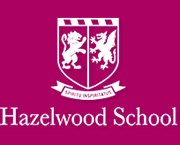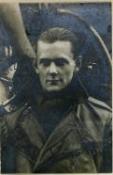
War Memorial
| 2nd Lieutenant Paul Searle WHITMORE | |
|
Army Service Corps and 62 Squadron Royal Flying Corps Date of birth: 9th February 1897 Date of death: 11th December 1973 Survived aged 76 Buried at the Church of St Mary the Virgin, Westerham, Kent. |

|
| Paul Searle Whitmore was born at "Sunnyside", Groombridge in East Sussex on the 9th of February 1897 the third son of Herbert Searle Whitmore, director of a tannery, and Annette (nee Watkins) Whitmore of “The Red House”, Tenchley’s Park, Limpsfield in Surrey. He was educated at Oaklands Court School, Broadstairs and at Hazelwood School from September 1910 to April 1911. He was a member of the Football XI in 1910 when the school magazine wrote the following on his season: - "(Right half) - Has many good qualities, but must beware of middling in his own half of the ground; is not yet fully master of the "dual control" whilst his tackling is open to criticism." On leaving the school the magazine wrote of him: - "...leaves us for Uppingham. A delicate constitution limited his sojourn amongst us to a couple of terms; despite this he yielded to none in loyal affection to Hazelwood and his departure is keenly regretted, In addition to being a very capable golfer, he has represented the school at football and hockey." He went on to Uppingham School from May 1911 to December 1915 where he was a member of the Officer Training Corps from September 1913 and rose to the rank of Lance Corporal. On the 7th of December 1915, and while still at school, he applied for a commission in the army expressing a preference for the Army Service Corps, Motor Transport. His application was supported by Mr. W.H. McKenzie, Headmaster of Uppingham School. On the 20th of January 1916 he was informed that there were no places for him in the Army Service Corps. He learnt to fly, obtaining his Aero Certificate (number 3194) at the Beatty School in Hendon on the 10th of July 1916 while flying a Beatty Wright biplane and was commissioned as a 2nd Lieutenant in the Royal Flying Corps (Special Reserve) on the 25th of July 1916. He was posted to 24 Reserve Squadron at Christ Church Oxford the following day. On the 15th of September 1916 he was posted to 62 Squadron at Filton, near Bristol. On the 4th of November 1916 he was very badly injured in a flying accident when his aircraft collided with a tree in fog. On the 12th of November it was decided that he should present himself to a Medical Board as he was showing signs of a nervous disability. On the 17th of November a Medical Board sat at Adastral House to consider his case: - " Neurasthenia (severe) He is suffering from the above disability, which is permanent as regards his fitness for the duties of a Flying Officer. The disability resulted from a collision with a tree whilst flying on 3.11.16 (non Expeditionary Force). He now reacts very poorly to the vestibular and fatigue tests, and there is marked nervous debility." He was passed as unfit for two months from the 17th of November 1916. On the 9th of December 1916 it was decided that he was no longer fit as a Flying Officer and that he should be considered for the infantry. Although he recovered from his injuries the resignation of his commission appeared in the London Gazette with effect from the 31st of March 1917. A Medical Board which was held at the War Hospital, Croydon on the 28th of April 1917 concluded: - "He is fit for general service. Instructed to re-join his unit at Bristol, where he is on duty and where he is on ordinary leave. Warrant issued." In a statement he wrote:- “I was boarded on November 17th and passed permanently unfit as a pilot and unfit for any service for a month. I was re-boarded on 31st January 1917 and passed fit General Service, and joined 62 Squadron, Bristol, in accordance with orders received from Adastral House. On 16th March 1917, I was again boarded and passed fit for Light Duty only. On 1st April 1917, my name appeared in London Gazette as relinquishing my commission on account of physical unfitness as a pilot. I had no further orders and remained at Bristol. This was the first and only intimation I had regarding my resignation. Towards the end of last month, I received the attached summons to attend a Medical Board at Croydon. This Board passed me fit General Service and ordered me to return to Bristol. I informed them that I had seen in the Gazette my name appearing as relinquishing my commission. I obtained leave from my Squadron to come and see my doctor in Town. He sent me to the R.F.C. doctor, Dr Swan, who examined me and informed me that he thought I was now fit to fly. I reported to Major Powell, Air Board Office – as advised by Dr Swan, and was again seen by the Medical Board who informed me I was still permanently unfit as a pilot.“ A file note dated the 14th of May 1917, from the Medical Officer in Charge of RFC Hospitals noted: - "Crash in November 1916, not unconscious, flying again next day but could not continue on account of pain in his stomach. 14 days later SMB pronounced him permanently unfit as pilot. Has been on LD ever since normally but practically did 3 weeks flying as the order against aviation had not come through. He now seems to be perfectly fit and anxious to fly anywhere. It appears to be one of those cases where either the belt of “joy” stick did temporary damage to his solar plexus and this has righted itself. Physique remains poor; chest expansion defective; cardio vascular system – a weak cardiac action rate 108 min. Very low arterial tone, and cold dusky extremities. Stomach atonic, dilated and splashing; pupils dilated. Deep reflexes exaggerated. Smoking. General stability hopeless. There are tremors and defective balancing power." His commission was not re-instated and he left the service. After the war he went to Clare College Cambridge after which he went into the family tanning business of Whitmores (Edenbridge). He was married at Holy Trinity Church Brompton to Elizabeth Clare (nee Madden) on the 30th of April 1930 and they lived at "Barrogill", Calonne Road, London SW19. They had a daughter, Elizabeth Clare, born in 1936. His brother, Captain Roger Searle Whitmore MC 1st Battalion King’s Shropshire Light Infantry, was killed in action on the 20th of November 1917. |
|
| Went on to Uppingham School |
Back